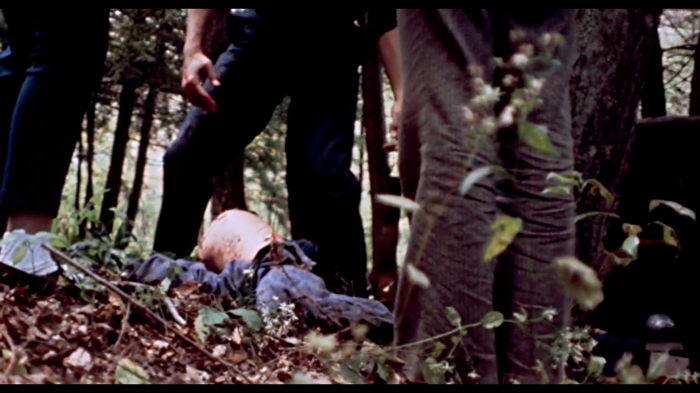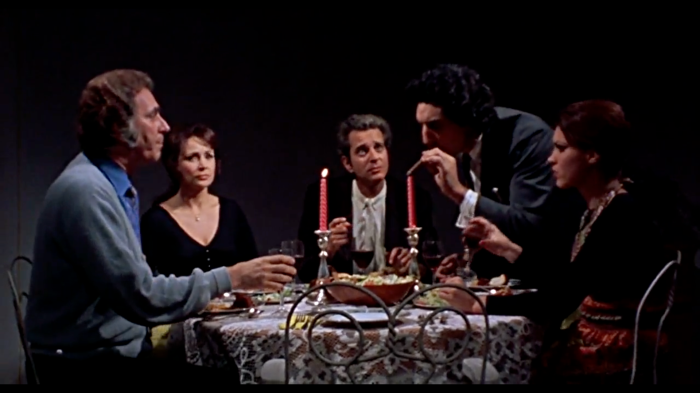
Director/Writer: Wes Craven (Based on Ingmar Bergman’s Virgin Spring)
When a troupe of violent sex criminals cross paths with the parents of their latest victim, a night of gory reprisals is set in motion. This dark-toned shaggy dog tale is notable for its now infamous scenes of violence and cruelty. It is also Wes Craven’s feature debut.
In cinema, nihilism is a slippery quality. When a film evokes it too lucidly, the effect is undercut (sort of a catch-22 scenario). After all, if your script about meaninglessness hits all of the right notes, you’ve got a problem. By virtue of having no virtues, it has become meaningful.
This might seem like an insuperable paradox for the nihilistic filmmaker, but Wes Craven finds a way around it. How? Truth be told, I’m still not entirely sure how this film works, though I’ll do my best to unpack it.
In the forty-plus years since its release, The Last House on the Left has been described variously as a comedy (yes, there are comic interludes), a gruelling horror (yes, there is gruelling horror), and a sex romp (yes, there are some less than sexy romps), but none of these markers comes close to describing the film’s real MO. Last House was not designed to make us laugh, or scream, or whoop… but rather, to deny us these things. In 2016, it doesn’t take a discerning viewer to see that this intent is hardcoded into the picture.
The best way to describe Last House is to imagine an issue of Seventeen, collaged together with the gnarliest pages of Penthouse Forum.
The film opens to scenes of an idyllic, middle class colonial in upstate New York. Good time girl Mari Collingwood (Sandra Peabody) is planning a trip into the city for her 17th birthday, and her parents are lightly resisting. These first scenes are integral to what comes later, establishing the confident performances of Peabody, Richard Towers, and Cynthia Carr (John and Estelle Collingwood respectively), along with the preppy tone. They also showcase the best aspects of Craven’s script, with witty, confessional dialogue, and lots of vicious foreshadowing.
Last House’s sadism is often flagged up in reviews, but it should be noted that many of the film’s most memorable words and images actually come before the mayhem gets underway. Take, for example, a sequence in which parents John and Estelle prepare for an evening of gentle intimacy. As the couple flirt, John playfully invites his wife to “Come into the living room… I want to attack you”. Later, Craven intercuts these cosy scenes with the literal ‘attack’ and violation of Mari, with David Hess’ score switching from sinister to saccharine on a dime. Perhaps the most brilliant aspect of Hess’ score lies in how its themes are reversed — whereas at first, the villains are underscored by dread music, and the parents by perky, upbeat muzak, once the daughter has been kidnapped, there is a tradeoff. Hess’ counterpointing perverts the tone of the film in a way that is both disturbing, and uniquely clever (for a taste of what I mean, listen to the Croce inflected ‘Sadie and Krug’).

Like his third feature; 1977’s The Hills Have Eyes, Last House’s antagonists are a motley of perverts, psychos, and addicts, held in place by a simple dynamic — one lone, somewhat marginalised female, a brutish leader with his son (or sons) in tow, and a kid with reservations. In both films, these groups are united through a common interest in violence and depraved sex, although their motives in each case differ somewhat (whereas the cannibal family from Hills were primarily survivalists, Last House’s murderers are pure-and-simple hedonists).
I would favour Last House as the superior film, if only because it doesn’t attempt the spectacle of Hills, and so avoids overreaching its means. Set pieces like the parents’ revenge plots are realistically unelaborate, and as such, the action remains grounded.
I can think of few pictures, horror or otherwise, which capture the slippery spirit of nihilism so well. Here, Craven offers no respite from the senseless barbarism of his villains – terror begets terror, as we find ourselves urging the bereaved parents to pay their torment forwards, and cheering when they do so in the worst ways. It’s easy to see where Hanake picked up the pieces, and indeed, what pieces he picked up. Like the Funny Games which succeeded it, Last House on the Left is a thoroughly adult meat. Even a Hannah Barbara subplot, in which the fat, sloppy sherif, and his dim deputy (which seem to come straight out of a Burt Reynolds movie) are comically foiled doesn’t offset the evil — if anything, it makes it emphatic.
S.S.